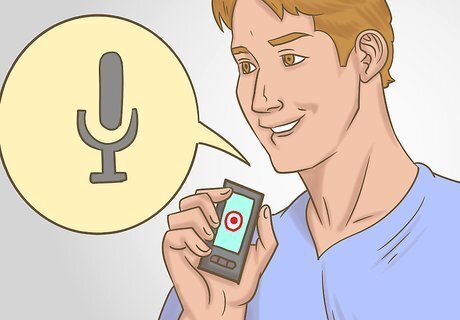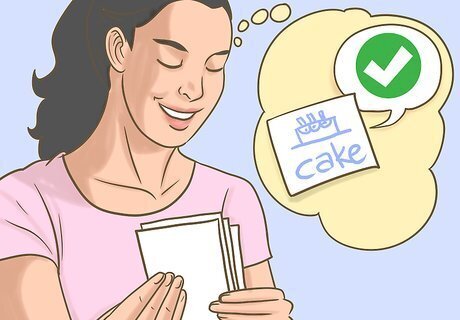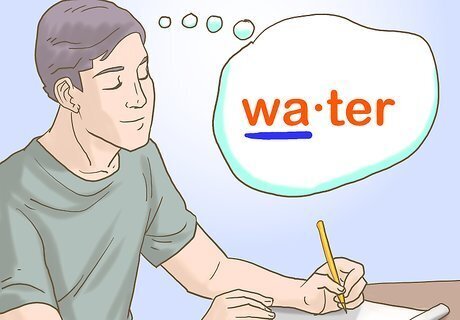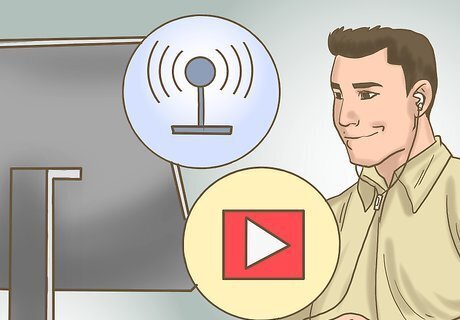
views
X
Expert Source
Patrick MuñozVoice & Speech Coach
Expert Interview. 12 November 2019.
When in doubt, ask a native speaker for help.
Practicing Difficult Phonemes and Syllables

Study how to form your mouth and tongue for each sound. Look up how to shape your mouth and tongue for each sound or watch a native speaker as they talk. Next, look in a mirror and try to match that shape. English language learning videos online are a great place to learn how to shape your mouth, tongue, and teeth.

Round your lips to make the "R" sound. Push the lips slightly forward as you speak. Pull your tongue down towards the middle of your mouth. Once you've tried saying the "R" by itself, practice with words like "right," "sorry," and "road."

Stick your tongue behind your teeth to make an "L" sound. The tip of your tongue should touch the roof of your mouth just behind your top front teeth. Open your mouth but do not make a shape with it. Practice first by saying "la, la" several times. Once you've gotten that down, try saying words like "light," "love," and "lamp."

Place your tongue between your teeth to make a "th" sound. To make a “th” sound, put your tongue just under your top teeth but do not touch the teeth. As you pronounce it, air should flow between your tongue and top teeth. Start practice by saying "the" several times until you master it. Then try saying words like "that," "this," and "teeth."

Rest your top teeth on your lips to make a "v" sound. As you make this sound, you should feel your teeth and lips vibrate. Practice with words like "very," "voice," and "love." Once you've mastered "v," challenge yourself with words like "verve" or "volvo."
Studying English Pronunciation

Read a passage out loud every day. No matter what stage of learning you’re at, daily practice is essential. Choose a passage from a magazine, online news site, or book. Read it out loud every day. Start by reading it to yourself. Once you’re more advanced, ask a native speaker or English teacher to listen to you speak.

Record yourself speaking to see how you have improved. Use an app on your phone or a voice recorder. Hit record and speak English into it. When you are done, play it back. How do you sound? Identify words that you need to spend more time studying. Find something to read, like a passage from a magazine, a poem, or a blog. To compare your recording to a native speakers, read out loud a famous poem. Then compare it to a recording of a native speaker saying the same poem. How do you compare? If you’re in an English class, ask your teacher to listen to the recording. Ask them how you could improve.

Talk to a dictation app. Some apps and programs will transform your spoken word into text. If you mispronounce something, it will tell you. You can use a translation program like Google Translate, a language learning program like Dictation.io, or an electronic assistant program like Siri or Alexa. If you mispronounce a word, these programs will correct you by asking if you meant a different word.

Practice tongue twisters. Tongue twisters are phrases that are difficult to say quickly because they contain many similar sounds. These are a great way for advanced learners to practice their skills. Try to say the following phrases correctly. When you master them, try saying them faster. She sells sea shells on the sea shore. Peter Piper picked a peck of pickled peppers. Red lorry, yellow lorry, red lorry, yellow lorry.

Find a native speaker to be your English buddy. A language buddy can hold conversations to help you learn to speak English naturally. Ask your buddy if they would correct you when you mispronounce something. Look for a language buddy on an online penpal site. Ask if they would talk on the phone or video chat with you. If you’re in an English class, ask your teacher if they can help you find a buddy. They may know of an exchange program that you can sign up for.
Learning Individual Words

Look up how to pronounce the word in a dictionary. Online dictionaries, like Dictionary.com or the MacMillan Dictionary, often provide audio samples for each word. Click on the speakerphone symbol to listen. Alternatively, if you know the International Phonetic Alphabet (IPA), read the pronunciation symbols.

Sound out each syllable of the word. For difficult words, break it down into its individual parts. Practice each syllable individually before putting the word back together. To test how many syllables there are, place your hand just below your chin. Count how many times your chin touches your hand as you speak. Each tap is a different syllable. For example, if you’re pronouncing “apple,” you would break it up into the following syllables: ap/ple. EXPERT TIP Stephanie Jeret Stephanie Jeret Speech-Language Pathologist Stephanie Jeret is a Speech-Language Pathologist based in Northeastern Illinois. She works with children who stutter, have receptive/expressive language difficulties, and have articulation disorders/delays. She also works with adults who present with dysarthria, apraxia, aphasia, executive function disorder, and stuttering. She is certified by the American Speech-Language and Hearing Association (ASHA) and received their ACE Award for excellence in continuing education. She is also PROMPT Bridge Trained, Lidcombe Trained, and Lee Silverman Voice Therapy Certified. Stephanie holds a Bachelor of Arts degree from Queens College and a Master of Science in Speech-Language Pathology from Brooklyn College. Stephanie Jeret Stephanie Jeret Speech-Language Pathologist Break words into syllables and focus on one part at a time to help with pronunciation. Breaking words into smaller parts can help pronunciation. For tricky words like "nuclear", clap out each syllable — nu-cle-ar. Focusing on one part at a time makes it easier to say the whole word correctly. This is really helpful if certain sounds are hard to say.

Create flashcards for each word. Memorize cards in sets of 10. This will help you learn the meaning and pronunciation of the word together. You can make your own flashcards using note cards or use a flashcards app on your phone. Add pictures to your flashcards. This will make your cards more effective.

Write down how to pronounce the word phonetically. On each flashcard, write down how to pronounce each syllable individually. When you study, this will help you remember how to say the word. There are 2 ways you can do this. If you know IPA, put down the IPA spelling of each word. You can find this in any English-language dictionary. If you don’t know IPA, write down how you might spell the word phonetically in your own language. While this can sometimes be an unreliable method, it may make it easier for you to memorize each word.

Mark which syllable needs to be stressed. In English, certain syllables are stressed in each word. When creating flashcards, make a note of which syllable needs to be stressed. You can draw a line over the syllable, underline it, or write the letters in capitals. Say this syllable with more emphasis or make it slightly louder than the others. The rules of stressing can vary greatly in English. In 2 syllable nouns (like water) or adjectives (like yellow), the first syllable is stressed. In 2 syllable verbs (like relax), however, the second syllable is stressed. In words with 3 or more syllables, the suffix (or ending of the word) determines which syllables get the stress. For example, for most words that end in -ly (like quietly) or -er (manager), stress the first syllable. In words that end in -tion (creation) or -ic (photographic), stress the second to last syllable. Rules can vary greatly on stressing, and there are many exceptions to every rule. A dictionary will always tell you the correct syllable to stress.
Mimicking English Sounds

Listen to podcasts and videos every day. The best way to learn pronunciation is to listen to native speakers. There are many podcasts and videos you can use to help improve your ear for English pronunciation. Listen to at least 1 podcast or video a day. You might watch a TV show, listen to a radio program, or look up programs on the internet.

Read a transcript of the video or podcast as you listen. Reading along will help you match the sound to the letters. You will begin to recognize how individual words are spelled or pronounced. On videos and YouTube, turn on closed captioning. Read the captions as the video goes along. Some English language learning websites will provide transcripts of videos or recordings. Read these as you go along. It is usually very easy to find the transcript of a famous poem or speech. Read through it as you listen to someone say it out loud.

Imitate the intonation of the recording. In English, part of pronunciation is something called “intonation,” which is the rhythm and pitch of your spoken words. Listen to a sentence or short clip from the recording. Repeat what the speaker said while trying to copy the rhythm of their voice. This is a good time to record yourself speaking. Compare your recording to the original video or podcast.


















Comments
0 comment